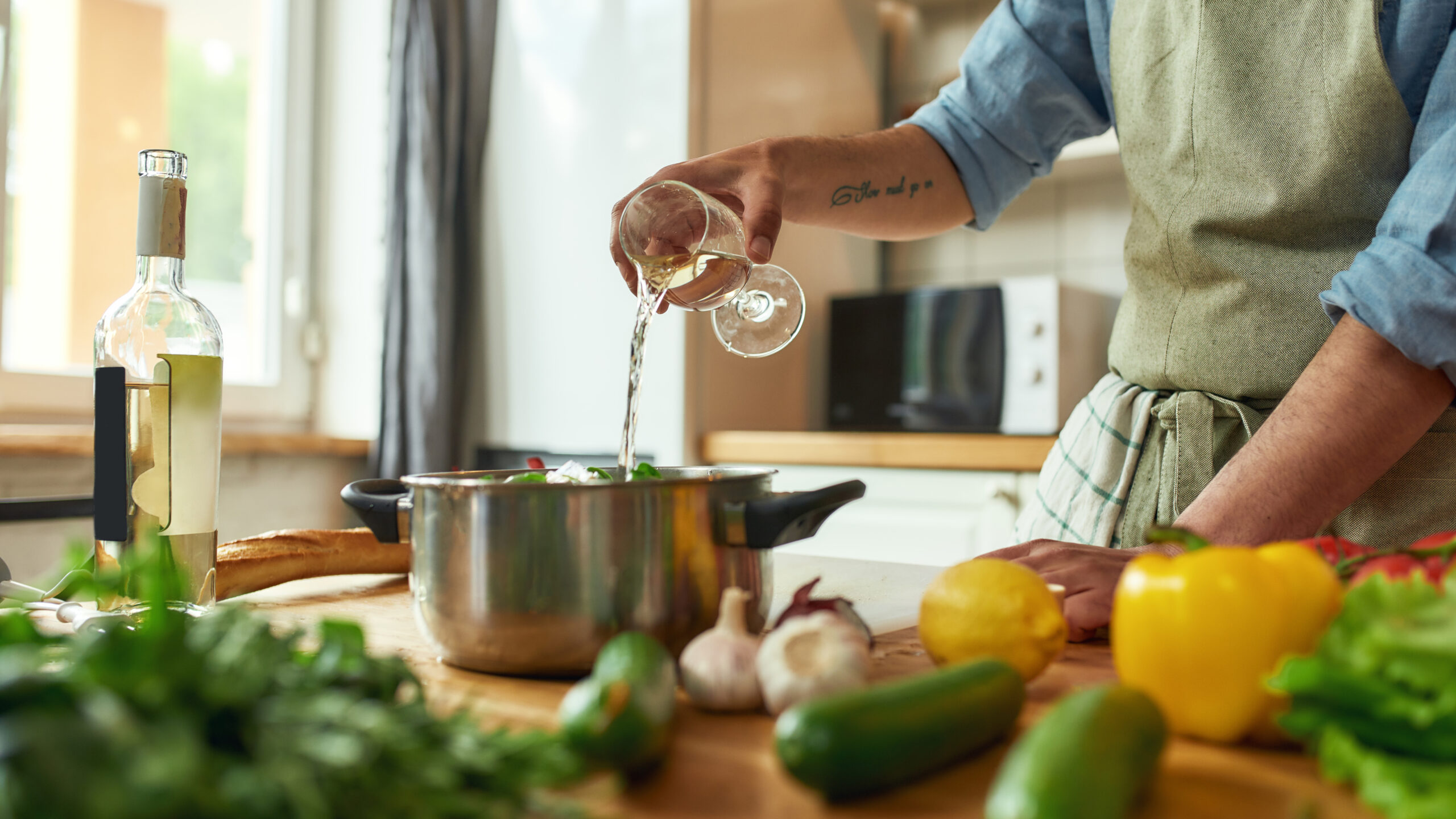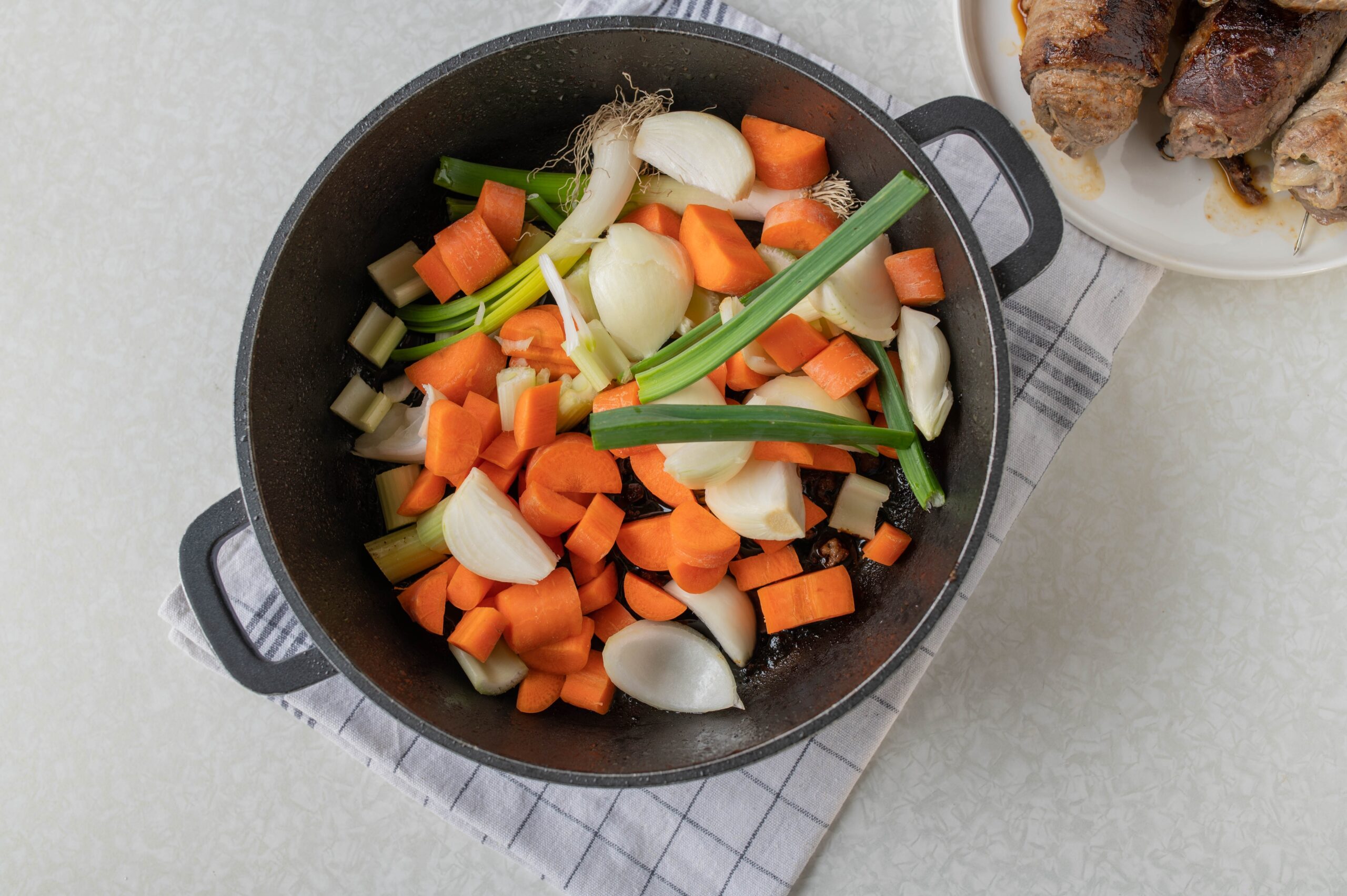Cooking with Dry White Wine to Elevate Your Culinary Experience

Learning how to cook with dry white wine can transform your meals into delightful culinary experiences, a true culinary art form. The subtle, nuanced flavors of dry white wine add depth and complexity to a wide range of dishes. Whether you’re deglazing a pan, enhancing a sauce, or marinating ingredients, the use of such wine will take your cooking to a whole new level. In addition, pairing the same wine with your dish can elevate your dinner with friends into a memorable occasion.
The Magic of Dry White Wine in Cooking
Dry white wine, with its crisp and clean profile, is a versatile ingredient that will enhance the flavors of various dishes without overpowering them. Seek out dry white wines with acidity and fruity notes, including solid boldness. To learn more about white wine styles, consider taking a wine class. Stay away from lighter dry white wines, such as Pinot Blanc, if you truly want to dish to project its distinctiveness. Here are some essential tips for cooking with white wine:
• Quality Matters: Just as you would choose a good wine to drink, select a quality white wine for cooking. The wine’s quality significantly impacts the taste of your dish, so opt for a wine you enjoy drinking on its own. Shy away from “cooking wines” that contains salt or flavorings. Inexpensive Greek white make a great option.
• Deglazing and Sauces: White wine functions perfectly for for deglazing pans, a technique that releases the flavorful bits stuck to the bottom after sautéing. It creates a rich base for sauces or gravies. Whether you’re making a creamy white wine sauce for chicken or adding it to a seafood casserole, the possibilities remain endless.
• Marinating: White wine forms an excellent marinade for meats, seafood, and even vegetables. Its acidity tenderizes and helps infuse flavors into your ingredients. Combine white wine with herbs, garlic, and other seasonings to create a delightful marinade.
• Poaching and Steaming: Poaching and steaming with white wine can impart a delicate flavor to fish and poultry. The wine’s subtle aromas enhance the overall experience.
Pairing White Wine with Dishes
Pairing the right white wine with your dish can elevate the entire dining experience. Here are some classic pairings to consider:
• Chardonnay: With its buttery and oaky notes, Chardonnay complements dishes like creamy pasta, roasted chicken, and seafood with rich sauces.
• Sauvignon Blanc: The crisp acidity of Sauvignon Blanc works wonderfully with light dishes, salads, seafood, and dishes featuring fresh herbs and citrus.
• Pinot Grigio: Known for its light and refreshing profile, Pinot Grigio is perfect for delicate seafood and light pasta dishes.
• Greek Dry Whites: If you’re looking for some savory boldness, inexpensive Greek whites pair well with dishes that savory complexity.
• Dry Vermouth: Don’t overlook dry vermouth, which can be an excellent option for savory recipes like Coq au Vin.

Cooking with White Wine: A Culinary Adventure
Cooking with dry white wine open up a world of culinary possibilities. Imagine a pan of succulent scallops gently sautéed in a white wine reduction, their delicate sweetness will be enhanced by the wine’s bright acidity. An elegant dish like this can be served with the same white wine used in cooking, creating a harmonious pairing that takes your dinner with friends to the next level.
Pairing the same wine you used for cooking with the finished dish can be a revelation. It creates a seamless connection between the flavors in your meal and the wine in your glass. The wine complements the dish by enhancing its aromatic nuances and providing a delightful tasting experience.
Creating Memorable Moments with Friends
Imagine inviting friends over for a dinner that begins with a glass of the same white wine used in the cooking process. As they take their first sips, they’ll already be getting a taste of what’s to come. The wine’s aromas will be familiar, setting the stage for the meal. Create a themed dinner with 2-3 dry white wines, allowing guests to discover the elements each wine has added to a dish.
As the meal progresses, each course can be accompanied by the same white wine chosen to pair perfectly with the dishes. Your friends will appreciate the thought and care you’ve put into creating a cohesive and memorable dining experience.

The History of a Dry White Wine Mirepoix
Now, let’s take a brief historical journey into the world of mirepoix made with dry white wine. Mirepoix constitutes a fundamental component of French cuisine, and its history is rooted in the culinary traditions of France. The term “mirepoix” refers to a mixture of aromatic vegetables, usually onions, carrots, and celery, which serve as a flavor base for many dishes. The history of mirepoix is both rich and intriguing.
The name “Mirepoix” comes from Charles-Pierre-Gaston François de Lévis, duc de Mirepoix, a French diplomat and a lover of fine food. He served Louis XV’s envoy to the English court starting in 1749 and enjoyed an intimate friendship with the philosopher Montesquieu, who had vast vineyards and made white and red wines.
A mirepoix infuses flavor into stocks, sauces, soups, and stews. It acts as the aromatic foundation upon which the rest of the dish is built. The vegetables are typically finely diced or minced and then sautéed in butter or oil until they become tender and release their aromatic flavors. This process is known as “sweating” the vegetables, and it allows them to develop a depth of flavor that enhances the final dish.
The classic mirepoix consists of:
• Onions: Known for their sweet and savory notes, onions are a crucial component of Mirepoix and provide a solid base for various culinary creations.
• Carrots, which contribute a subtle sweetness and a vibrant orange hue to the mixture, balancing the flavors.
• Celery, which adds a refreshing, herbal quality and a slight bitterness, complementing the other vegetables.
In addition to the classic Mirepoix, there are variations that include ingredients like leeks, garlic, and bell peppers, depending on regional and individual preferences.
The significance of mirepoix in French cuisine cannot be overstated. It is the starting point for countless classic dishes and well worth experimenting with. Mirepoix with dry white wine is the classic version!
A Culinary Conclusion
In conclusion, cooking with white wine provides delightful journey through the world of culinary possibilities. The marriage of wine and food can elevate a simple meal into an extraordinary dining experience, especially when you pair the same white wine with the dish. Gather with friends for a memorable evening, and let the thoughtful selection of white wines create a harmonious symphony of flavors and aromas. Cooking with white wine offer not just a culinary technique, but a gastronomic art that enriches the senses and brings joy to the table. So, the next time you open that white wine bottle, be sure to offer a toast to the magic dry white wine brings to your kitchen and your table.



